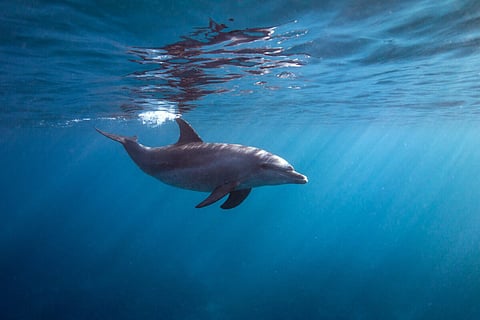

This entry is a continuation of our previous "What Lies Behind Seaspiracy?", where we discussed different problems happening in our oceans. Here we will address the film's claims about our fisheries and the sustainability in the industry.
Illegal behaviors from illegal fisheries exist and are a problem for the whole industry, even the UN reports them as a major issue. You will not find one organization that can deny Seaspiracy's claims about this, as well as the human rights violations performed by illegal fisheries in some regions. Oceana and the Seafood Task Force are two of the many organizations globally that actively work in ensuring illegal fishing practices come to a halt. They do so by monitoring and reporting these activities. Part of this active work involves ensuring traceability of fish feed and catch.

Illegal, Unreported, Unregulated (IUU), and unmanaged fishing do not represent the majority of the fishing activities. There are hundreds of thousands of people involved in the industry. People that comply with local and international legislation as well as with certifications that regulate the industry. Legislations are in place regarding these practices, however, enforcing them has become a different topic.
According to FAO since fisheries crimes are "transnational and organized. Cooperative law enforcement efforts including intelligence-led cross-border investigations must be enhanced. To address fisheries crime in all its various forms in the fishing sector, focusing on targeting the key individuals who are the real beneficiaries of such criminal activities".
Seaspiracy states that 40% of the catch is bycatch and thrown back out to the ocean. The true statistics show that discarded bycatch represents 10% of the catch. 15.83% in Chinese fisheries. Bycatch is the total catch of non-target animals. Different fisheries have different rates of bycatch.

A study that assesses the cumulative turtle bycatch numbers from 1990 to 2007 ( Finkbeiner et al., 2011) had different findings. Among them, they found that before fisheries started implementing bycatch mitigation methods around 71.000 turtles died every year. By the time of the study, the estimates were around 4.600 turtle deaths per year.
Bycatch has been an issue with fisheries. However, there is active ongoing research into bycatch reduction. Improving every year. As I write these lines, the development of new technologies is probably happening. Devices such as Turtle Excluder Devices and fishing gear to prevent shark bycatch.
Reducing bycatch increases production sustainability. By decreasing bycatch, fisheries have cost-effective operations as well. Claiming bycatch is done intentionally and without interest in resolving the situation, is implying fisheries profit off of draining their money down the toilet. And that does not make sense in any production point of view
There is something every organization in the industry can agree with Seaspiracy, Illegal and unregulated fishing practices must stop. Not only because they are pirating legal markets across the globe. But because they damage habitats and reduce fish stocks considerably. However, Seaspiracy makes an assertion we can disagree on "sustainable fish and seafood doesn't exist". By definition, Sustainable Fishing Practices are those where you only catch "the right" number of fish in order to preserve the perpetuity of the species. There are studies and math done on what "the right amount" for each species is.

The truth is, at least 70% of fish stocks are exploited sustainably. As a matter of fact, most fisheries NEED to remain sustainable as these practices also secure productivity. Having great management of their practices ensures keeping their stock levels in target numbers, or above that. The more seafood there is, the more jobs there are, the more people benefit from fish. I do not think that Scientist, Technicians, Experts, Veterinarians, NGOs, and governments involved in the industry are actively not aiming for sustainable practices.
Even if these practices did happen, and we were at a point where we were overfishing our stocks, that has changed so much. Companies involved across the value chain in the fishing industry have committed to the reduction of their impact, involving themselves in having transparent practices and direct markets. Experts, Scientists, and the overall industry have worked relentlessly to improve the fisheries for over 30 years.
________________________________________________________________________________________________
In our next entry we are going to talk about the different organizations that are stewards of our oceans and about the Aquaculture industry. What does the film say about this? What is actually going on? If you do not want to miss out our entries, make sure to follow us on Social Media so you can be notified whenever we post updates_____________________________________________________________________________________________Disclaimers: This entry represents a personal weblog and not a peer-reviewed journal or sponsored publication. Although, we try to present the accuracy and validity of its content, it is possible there may be some errors and omissions. We encourage the reader to verify their own facts. The views, thoughts, and opinions expressed in the text belong solely to the author, and not necessarily to the author's employer. They do not represent the official policy and position of the company. Since we are critically-thinking human beings, these views and opinions are subject to change, revision, and rethinking at any time. Therefore, feel free to challenge and disagree with our views and opinions. The author or the company are not to be held responsible for any misuse, reuse, recycling, and citations from our content.
